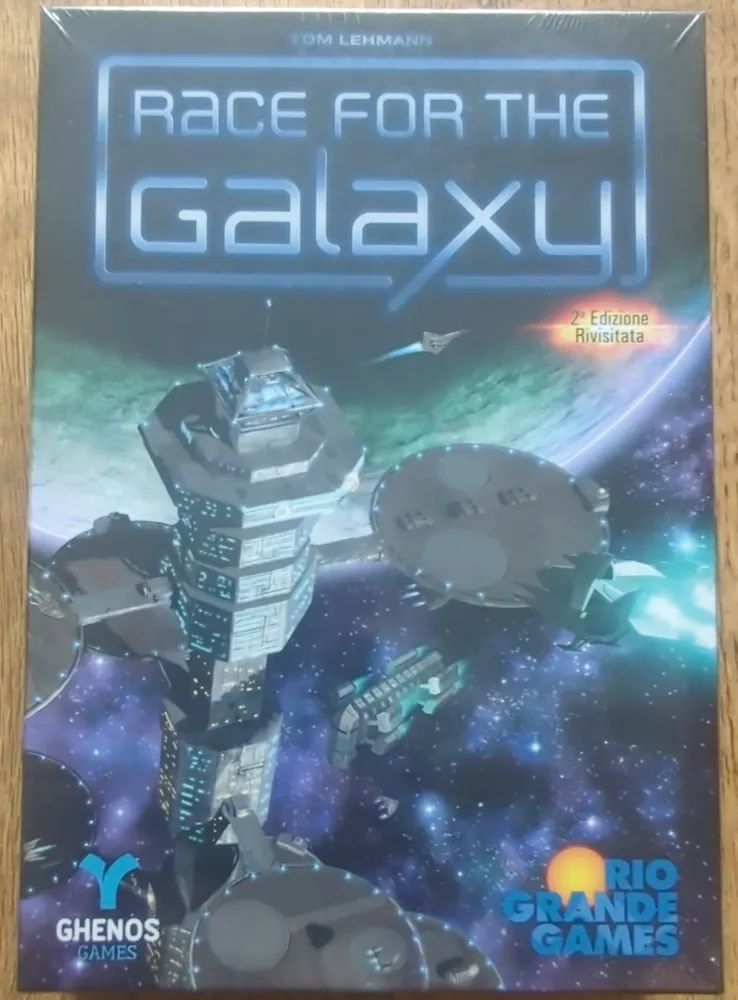Race for the Galaxy (2007)
Race for the Galaxy
“Race for the Galaxy” is a card game designed by Thomas Lehmann, released in 2007 by Rio Grande Games. The game’s theme revolves around building galactic civilizations using game cards that represent worlds or technical and social developments. It accommodates two to four players by default, with expansions allowing for up to six players and solo play. The game uses iconography in place of language in some areas, with complex powers also having a text description.
Why is Race for the Galaxy Popular?
“Race for the Galaxy” has gained popularity for several reasons:
– It won Boardgamegeek’s Golden Geek Award for best card game and Fairplay Magazine’s À la carte award for best card game of 2008.
– The game is part of a series of related games, including “San Juan” and “Roll for the Galaxy,” which share similar gameplay and mechanics.
– It is considered a significant milestone in the development of the role civilization genre in board games.
Game Components of Race for the Galaxy
How To Setup Race for the Galaxy
To set up the game, each player starts with a handful of cards as their budget, typically six cards from which they discard two. This initial hand sets the path for their empire. Players also begin by settling a single planet dealt from a subset of the available cards.
Gameplay Mechanics and Game Objective
Player Experience
Playing Race for the Galaxy involves intense strategic planning and adaptability. The game requires understanding the complex iconography on the cards and managing multiple synergies and interrelationships between them. Players must navigate the game’s tempo by selecting actions that align with their strategy while considering the potential actions of their opponents. The game can be quite challenging, especially for new players, due to its cognitive complexities and the need to mitigate luck in card draws.
Pros
Cons
Personal Thoughts on Race for the Galaxy
Race for the Galaxy is ideal for experienced board game players who enjoy complex strategy and engine-building mechanics. It is not recommended for casual players due to its steep learning curve and intricate gameplay. However, for those willing to invest the time to learn and master it, the game offers a highly rewarding and engaging experience. It is a great choice for players looking for a deep, portable, and fast-paced game that challenges their strategic thinking.
We are supported by our audience. When you purchase through links on our site, we may earn an affiliate commission, at no extra cost for you. Learn more.

